#Anton de Kom
Text

Hét portret van Anton de Kom. Van collage tot icoon / The Defining Image of Anton de Kom. From Collage to Icon, Kunstmuseum Den Haag, November 27, 2021 – March 20, 2022
«When We Slaves of Suriname was almost ready for publication, the photographer, typographer and industrial designer Piet Zwart (1885-1977) was commissioned to design the book cover. […] Zwart began the design process for the book cover with a photo shoot that resulted in two portraits of the author: one with a serious expression and one with a smile. The portraits are unconventional compared to others of De Kom, who usually posed in formal clothing. Zwart cut De Kom's head from the first portrait and added it to a photocollage of numerous cut-out figures that seem to represent the Surinamese population. Zwart used the photocollage as the basis of a sketch design with diagonal and vertical lines of text in black and red. Ultimately, Zwart's dynamic design was not used on the cover of De Kom's book. It was most likely rejected by the publisher, Contact, which opted simply to use Zwart's portrait of De Kom on the cover of We Slaves of Suriname. The exhibition features the original collage and sketch design for the book cover and prints of both the serious and smiling portrait.»
– (excerpt from the exhibition presentation)
#graphic design#preparatory study#preliminary drawings#drawing#photocollage#collage#sketch#handwriting#notation#visual writing#exhibition#book#anton de kom#piet zwart#contact#kunstmuseum den haag#1930s#2020s
34 notes
·
View notes
Text

December 21, 2022
#amsterdam#nieuwe kerk#rondleiding#juliana#laatste rondleiding van het jaar#herdenkingssteen#anton de kom#slavernij#eindelijk#moet nog geplaatst worden in de kerk#zichtbaar
2 notes
·
View notes
Text
Oema foe Sranan
Recensie Oema foe Sranan ★★★★ - vanaf 9-3 in de bioscoop en op Pepr via @PiclNL
Een korte, tijdloze documentaire over de Surinaamse onafhankelijkheid. Hoogtepunt is de de prachtige muziek, die vertelt wat het volk destijds dacht en voelde.
In de documentaire Oema foe Sranan (Vrouwen van Suriname) komen vier Surinaamse vrouwen aan het woord. Zij vertellen persoonlijke verhalen over hun leven in Suriname, rond de Surinaamse onafhankelijkheid in 1975. Wat wij van Oema foe Sranan vinden, lees je in onze recensie.
(more…) “”

View On WordPress
#Anton de Kom#bioscoop#documentaire#Full Color Entertainment#Nederland#Oema Soe Franan#Pepr#Picl#review
0 notes
Text
Geen rattengif gevonden in water en dieren Nickerie
Minister Prahlad Sewdien van Landbouw, Veeteelt en Visserij (LVV) zegt dat de rattenplaag in Nickerie onder controle is en er geen sporen van vergif zijn gevonden in de onlangs dood gevonden dieren.
De bewindsman sprak de redactie vandaag voor aanvang van de ministerraadsvergadering. Hij stelt dat wetenschappers van de Anton de Kom Universiteit nog bezig zijn met het onderzoek naar sporen van…
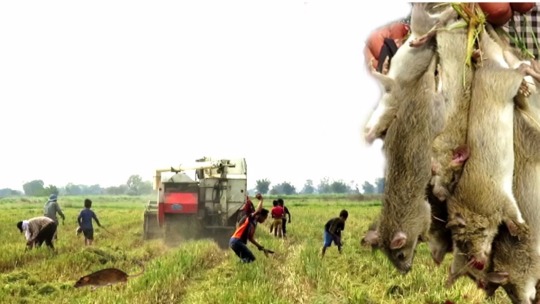
View On WordPress
0 notes
Text



“Dutch King apologizes for Netherlands’ role in slavery.”
The Dutch/Netherlands abducted slaves from West Africa; hosted the Dutch West India Company; operated an extensive profitable sugar plantation industry built on slave labor; and established colonies in the greater Caribbean region including sites at Aruba, Curaçao, Sint Maarten, Bonaire, and the adjacent “Wild Coast” (land between the Orinoco and Amazon rivers, including Guyana and Suriname). Many of these places remained official colonies until between the 1950s and 1990s.
---
Scholarship on resistance to Dutch practices of slavery, colonialism, and imperialism in the Caribbean:
“Decolonization, Otherness, and the Neglect of the Dutch Caribbean in Caribbean Studies.” Margo Groenewoud. Small Axe. 2021.
“Women’s mobilizations in the Dutch Antilles (Curaçao and Aruba, 1946-1993).” Margo Groenewoud. Clio. Women, Gender, History No. 50. 2019.
“Black Power, Popular Revolt, and Decolonization in the Dutch Caribbean.” Gert Oostindie. In: Black Power in the Caribbean. Edited by Kate Quinn. 2014.
“History Brought Home: Postcolonial Migrations and the Dutch Rediscovery of Slavery.” Gert Oostindie. In: Post-Colonial Immigrants and Identity Formations in the Netherlands. Edited by Ulbe Bosma. 2012.
“Other Radicals: Anton de Kom and the Caribbean Intellectual Tradition.” Wayne Modest and Susan Legene. Small Axe. 2023.
Di ki manera? A Social History of Afro-Curaçaoans, 1863-1917. Rosemary Allen. 2007.
Creolization and Contraband: Curaçao in the Early Modern Atlantic World. Linda Rupert. 2012.
“The Empire Writes Back: David Nassy and Jewish Creole Historiography in Colonial Suriname.” Sina Rauschenbach. The Sephardic Atlantic: Colonial Histories and Postcolonial Perspectives. 2018.
“The Scholarly Atlantic: Circuits of Knowledge Between Britain, the Dutch Republic and the Americas in the Eighteenth Century.” Karel Davids. 2014. And: “Paramaribo as Dutch and Atlantic Nodal Point, 1640-1795.” Karwan Fatah-Black. 2014. And: Dutch Atlantic Connections, 1680-1800: Linking Empires, Bridging Borders. Edited by Gert Oostindie and Jessica V. Roitman. 2014.
Decolonising the Caribbean: Dutch Policies in a Comparative Perspective. Gert Oostindie and Inge Klinkers. 2003. And: “Head versus heart: The ambiguities of non-sovereignties in the Dutch Caribbean.” Wouter Veenendaal and Gert Oostindie. Regional & Federal Studies 28(4). August 2017.
Tambú: Curaçao’s African-Caribbean Ritual and the Politics of Memory. Nanette de Jong. 2012.
“More Relevant Than Ever: We Slaves of Suriname Today.” Mitchell Esajas. Small Axe. 2023.
“The Forgotten Colonies of Essequibo and Demerara, 1700-1814.” Eric Willem van der Oest. In: Riches from Atlantic Commerce: Dutch Transatlantic Trade and Shipping, 1585-1817. 2003.
“Conjuring Futures: Culture and Decolonization in the Dutch Caribbean, 1948-1975.” Chelsea Shields. Historical Reflections / Reflexions Historiques Vol. 45 No. 2. Summer 2019.
“’A Mass of Mestiezen, Castiezen, and Mulatten’: Fear, Freedom, and People of Color in the Dutch Antilles, 1750-1850.” Jessica Vance Roitman. Atlantic Studies 14, no. 3. 2017.
---
This list only covers the Caribbean.
But outside of the region, there is also the legacy of the Dutch East India Company; over 250 years of Dutch slavers and merchants in Gold Coast and wider West Africa; about 200 years of Dutch control in Bengal (the same region which would later become an engine of the British Empire’s colonial wealth extraction); over a century of Dutch control in Sri Lanka/Ceylon; Dutch operation of the so-called “Cultivation System” (”Cultuurstelsei”) in the nineteenth century; Dutch enforcement of brutal forced labor regimes at sugar plantations in Java, which relied on de facto indentured laborers who were forced to sign contracts or obligated to pay off debt and were “shipped in” from other islands and elsewhere in Southeast Asia (a system existing into the twentieth century); the “Coolie Ordinance” (”Koelieordonnanties”) laws of 1880 which allowed plantation owners to administer punishments against disobedient workers, resulting in whippings, electrocutions, and other cruel tortures (and this penal code was in effect until 1931); and colonization of Indonesian islands including Sumatra and Borneo, which remained official colonies of the Netherlands until the 1940s.
162 notes
·
View notes
Text
International Symposium on the "History and Legacy of Muslims in the Caribbean"

ircica.org
International Symposium on the "History and Legacy of Muslims in the Caribbean"
OIC IRCICA
6–8 minutes
The International Symposium on the “History and Legacy of Muslims in the Caribbean” organized by IRCICA, OIC General Secretariat, the Government of Guyana and Guyana University was opened by President H.E. Mohamed Irfaan Ali with a Feature Address on 4 September 2023. IRCICA Director General Prof. Mahmud Erol Kılıç gave an address at the opening ceremony. Moderated by Mr. Al Creighton, Dean of the Faculty of Humanities and Education of the University of Guyana, the ceremony started with Quran recitation and translation by Hafiz Salih Rahim, and heard the opening remarks of H.E. Mr. Hugh Hilton Todd, Minister of Foreign Affairs and International Cooperation; Dr. Abdullah Hakim Quick, Special Envoy of IRCICA to the Caribbean; Dr. Alhoucine Rhazoui, Director of Cultural Affairs, OIC General Sceretariat, as well as cultural items, consisting of the Islamic Chant in Urdu recited by Mr. Imran Ali, Deputy President of the Muslim Youth Organization, and the Islamic Chant in Yoruba language presented by Mr. Toyib Hamza. A press conference followed the opening session. The ceremony and the working sessions were held at Arthur Chung Conference Center in Georgetown.
Subsequently, the same day, IRCICA Director General Prof. Mahmud Erol Kılıç was received by H.E. President Mohamed Irfaan Ali for a welcoming meeting. Professor Kılıç briefed H.E. the President about IRCICA’s objectives and activities. Mr. Hugh Hilton Todd, Minister of Foreign Affairs and International Cooperation, high officials from Guyana, and the IRCICA delegation members, were also present at the meeting. Director General Prof. Kılıç presented H.E. President Irfaan Ali and Foreign Affairs Minister Mr. Hugh Todd with samples of IRCICA’s publications in the series of studies on the Holy Qur’an.
The working sessions of the symposium, spread over three days, were on the following themes:
First day, Session I: Globalization and Localization in the Caribbean: Aliyah Khan, University of Michigan, | The Qasida and Muslim Devotional Music in Guyana and Trinidad; Frank J. Korom, Boston University | The Current State of Hosay (Moharram) Observances in the Caribbean; Abdin Chande, Adelphi University | Migration and Identity of South Asians of the Caribbean and East African Indian Ocean Region: A Comparative Analysis; Maurits S. Hassankhan, Anton de Kom University of Suriname | Localization and Globalization of Religion: The Case of Hindustani Muslims in Suriname.
Session II: Islam in the Greater Caribbean from Early History to Today: Abdullah Hakim Quick, The Islamic Institute of Toronto | Aspects of Muslim History and Legacy in Pre-Columbian America; Juan Thomas Ordóñez, Universidad del Rosario | Caribbean Lebanon: The Muslim Experience on the Colombia/Venezuela Border; Mohamed A. Hakim, Islamic Educator and Social Activist in Haiti | History of Muslims in Haiti; Nuri Muhammad, Imam, Radio Commentator and Social Activist | The Evolution of Muslim Presence in Belize and the Significance of Garifuna Cultural Retrieval;
Session III: Panel on Black Atlantic Muslim Movements – Remapping and Theorizing Global South Migrations: Youssef Carter, University of North Carolina-Chapel Hill | Western Sunrise in the Global South: The Islamic Party comes to the Caribbean; Tasneem Siddiqui, Drexel University | The Caribbean Is No Island: Rethinking Black Geographies through Muslim Resistance Movements; Nsenga Knight, Artist & Storyteller | Irregular Black Muslims: Diasporic Exchange & The Caribbean Elsewhere.
Second day, Session I: Guyanese Experience: Ateeka Khan, McMaster University | East Indians, Religion, and Politics in 20th Century Guyana; Nazim Baksh, Former Investigative Producer with Canadian Broadcasting Corporation (CBC) | Conflict, Continuity and Change of Religious Narratives and Practices of Muslims in Guyana (1977-1981); Ahmad Hamid, Imam and Researcher | The Challenges and Role of CIOG in the Transformation of the Muslim Community of Guyana from Chaos to Stability; Wazir Baksh, Historian and Community Activist | The Masjid as an Essential Institution to Preserve Faith and Social Cohesion: The Case of Guyana.
Session II: Voices from Trinidad and Tobago: Halima-Sa’adia Kassim, University of the West Indies | An Evaluation of the Resultant Negotiations of Living in an Alien Society: The Indo-Muslims of Trinidad Claiming Their Place; Nasser Mustapha & Mirza Ali Mohammad, University of the West Indies | Race and Ethnic Relations in Trinidad and Tobago; Anand Rampersad, University of the West Indies | Successful Muslim Cricketers in Trinidad and Tobago.
Session III: Economy, Identity and Decolonization in the Caribbean: Ibraheem Musa Tijani, International Islamic University Malaysia | The Economic Development and Commerce of the Muslim Communities in the Caribbean and the Emergence of Islamic Finance in the Region; Stanley L. Soeropawiro, Policy Advisor Religious Affairs, Ministry of Home Affairs (Suriname) | Economic Development among the Javanese Muslims in Suriname; Karimah Rahman, Toronto Metropolitan University | Decolonizing Muslim Indo-Caribbean Mental Health; Suleiman Bulbulia & Sabir Nakhuda, Historians and Authors | The Muslims of Barbados: Sustaining A Muslim Identity.
Third Day, Special Presentation at the University of Guyana by: Abdullah Hakim Quick, Nuri Muhammad, Mohamed A. Hakim and Stanley L. Soeropowero.
The closing ceremony of the symposium was conducted with the remarks of Prof. Dr. Aboubacar Abdullah Senghore, Assistant Director General, IRCICA and Ambassador Elisabeth Harper, Permanent Secretary, Ministry of Foreign Affairs and International Cooperation of Guyana.
On 5 September 2023, IRCICA Director General Prof. Mahmud Erol Kılıç had a meeting with Professor Paloma Mohamed Martin, Vice-Chancellor of the University of Guyana. The meeting was a fruitful occasion to exchange views on research and education in Islamic studies.
During the symposium period, Director General Prof. Mahmud Erol Kılıç held contacts and meetings with Muslim cultural institutions and educational organizations in Guyana including the Central Islamic Organization of Guyana (CIOG), Guyana Islamic Trust and the ISA School.
2 notes
·
View notes
Text
23 books for 2023
East Asian
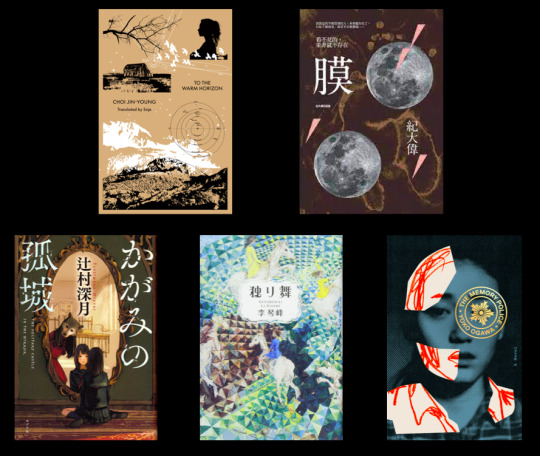
해가 지는 곳으로 To the Warm Horizon (Choi Jin-young)
膜 The Membranes (Chi Ta-wei)
かがみの孤城 Lonely Castle in the Mirror (Tsujimura Mizuki)
独り舞 Solo Dance (Li Kotomi)
密やかな結晶 The Memory Police (Ogawa Yōko)
Scandinavian
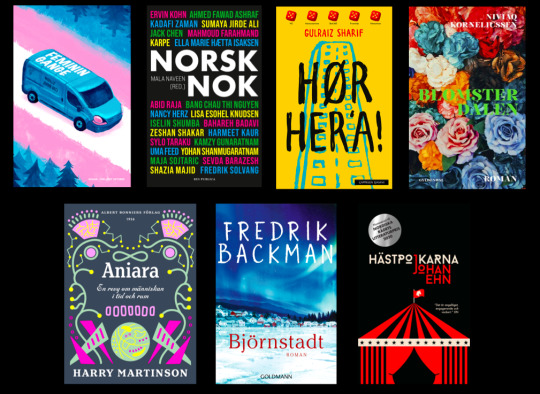
Feminin gange (Molly Øxnevad)
Norsk Nok (ed. Mala Naveen)
Hør Her’a (Gulraiz Sharif)
Blomsterdalen (Niviaq Korneliussen) - Originally in Danish but I have the Norwegian translation
Aniara (Harry Martinson)
Björnstad (Fredrik Backman)
Hästpojkarna (Johan Ehn) - Originally in Swedish but I have the Norwegian translation Hesteguttene
African
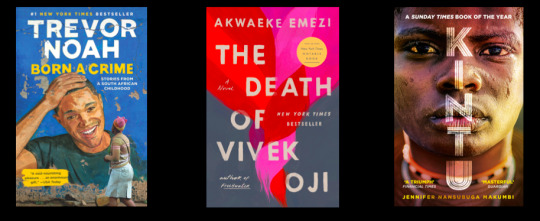
Born a Crime (Trevor Noah)
The Death of Vivek Oji (Akwaeke Emezi)
Kintu (Jennifer Nansubuga Makumbi)
Dutch and German
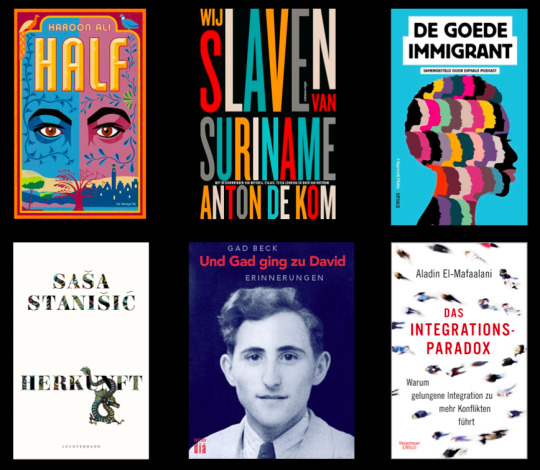
Half (Baron Ali)
Wij slaven van Suriname (Anton de Kom)
De Goede Immigrant (ed. Dipsans Podcast)
Herkunft (Saša Stanišić)
Und Gad ging zu David (Gad Beck)
Das Integrationsparadox (Aladin El-Mafaalani)
Scottish and British

The Wages of Sin (Kaite Welsh)
Maurice (E.M. Forster)
7 notes
·
View notes
Text
What I dislike about a lot of activists in Europe is that they know a lot about American progressive historical figures (Huey p Newton, Marsha p Johnson, Harvey Milk) but very little about the progressive heroes of their own country. I'm not saying they can't learn from American heroes, or shouldn't study them. It's more like why can't they celebrate both Huey p Newton and Anton de Kom
3 notes
·
View notes
Text
28-4 Zo maar wat overwegingen in Zaandijk
Ik kan me nog maar moeilijk voorstellen dat ik over een kleine maand echt vertrek. Ik verricht alle voorbereidende handelingen, koop de nodige spullen, vertel aan iedereen dat ik vertrek, maar op de een of ander manier voelt het nog steeds niet echt. Dat komt natuurlijk omdat ik nog steeds druk ben met mijn werk, er moet nog van alles af (vind ik). Bovendien hebben mensen er een handje van om te zeggen, ik weet dat je met pensioen gaat, maar zou je misschien nog even en dan volgt een heel verzoek. En ik, ijdeltuit, kan dan natuurlijk weer niet weigeren.
Om het iets concreter te maken, heb ik met Bob en Hetty in Nieuw Schoonebeek afgesproken dat ik daar woensdag 22 mei kom logeren. Dat is ongeveer 200 kilometer hier vandaan, dus dat kan natuurlijk ook in twee dagen, maar ik wil juist in het begin een beetje rustig aan doen.
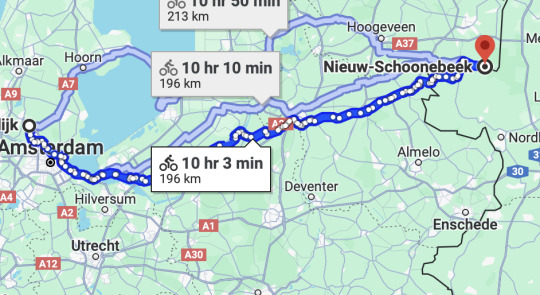
Volgens Google kan dat in 10 uur, maar mijn ervaring is dat je blij mag zijn met een gemiddelde van 14 kilometer per uur. Dus 15 uur fietsen is een realistischer aanname en als je van de etappes nu niet meteen werkdagen maakt, kom je vanzelf op drie dagen uit met voldoende tijd voor koffie en sightseeing.
Verder heb ik laatst een bezoekje aan de fysiotherapeut in Koog gebracht om te horen wat ik kan doen aan mijn zeurderige linkerknie. Die zeurt al jaren, maar vlak voor zo'n lange tocht word ik toch altijd een beetje zenuwachtig. Dat leverde een paar prettige oefeningen op, die je liggend kunt uitvoeren en een spoedcursus knieschijf tapen. Je neemt twee stroken Hansaplast kinetic tape van 15 cm en knipt ze over de lengte voor driekwart in tweeën. Dan rond je alles hoekjes netjes af. Je plakt de eerste strook met het dikke gedeelte boven de knieschijf en ligt de twee stroken links en rechts om de knieschijf heen. Dan doe je hetzelfde van onderaf net de tweede strook. Tot slot zet je nog een korte strook dwars over de patella net onder de knieschijf. Baat het niet, dan schaadt het niet en je hebt in elk geval het gevoel dat je er iets aan doet.
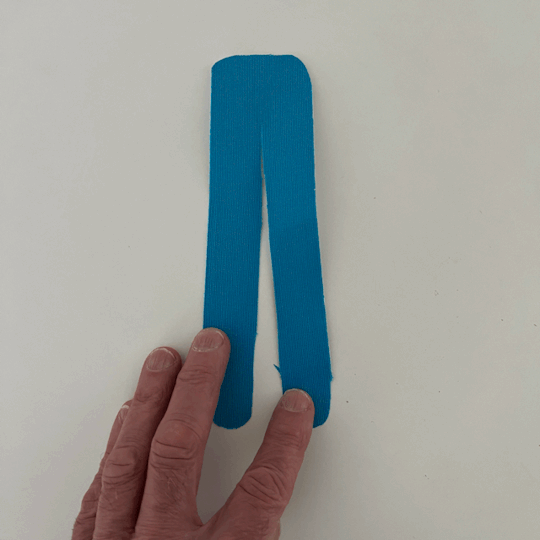
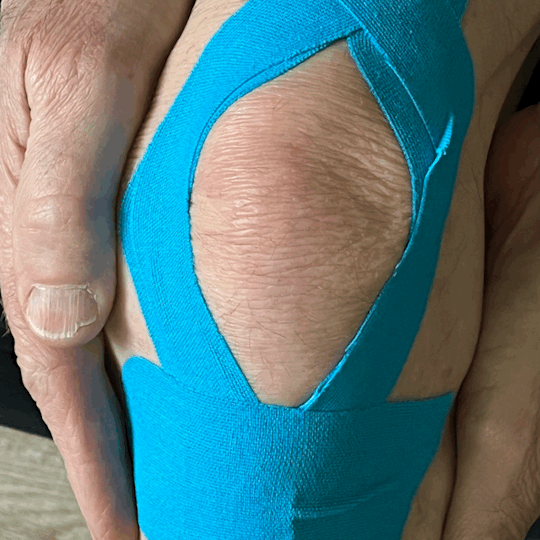
Verder heb ik de route vanaf de Noordkaap tot Linköping nu uitgepuzzeld. Linköping omdat dat vanaf de Noordkaap mijn volgende bestemming is, even bij Anton langs. Om daar te komen volg ik in hoofdzaak de EV7, de Eurovelo 7. Dat is typisch weer zo'n project gefinancierd met Europees geld, dus er zijn geen gidsjes van en op bordjes langs de weg hoef je al helemaal niet te rekenen. Gelukkig biedt opencyclemaps.org uitkomst, daar staat ie op. Alleen is de betreffende kaartlaag dermate karig, dat er niks anders opzit dan er een fysieke kaart naast leggen en daar de route uittekenen. Vervolgens heb ik alle plaatsen waar je doorheen komt met de wegnummers onder elkaar gezet. Als ik die nu uitprint en lamineer, dan heb ik een onverwoestbare allweather routebeschrijving. Een uitkomst als je telefoon het niet doet, bijvoorbeeld als die (niet geheel ondenkbaar, zie 2017) in de WC gevallen is. Hieronder een voorbeeldje, de cijfers geven het aantal kilometers aan vanaf de eerste plaats in het rijtje.
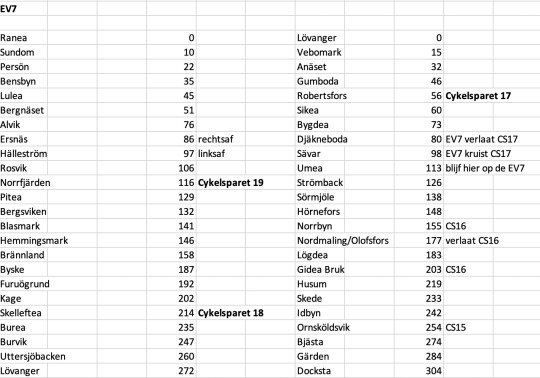
0 notes
Text

“Luister goed naar je lichaam voordat het schreeuwt.” Deel 1.
Mijn naam is Helena Hitharie-Pattinama en ben ik getrouwd met Mozes Hitharie. Ik ben van mijn vaderskant 2e generatie- en van mijn moederskant 3e generatie Molukse. Mijn vader is als KNIL-militair naar Nederland gekomen en bleven zijn ouders achter op kampong Oma. Mijn opa is overleden toen mijn vader 9 jaar oud was. Mijn vader heet Anton Pattinama en komt hij uit een gezin van zes kinderen. Mijn moeder is Buang Pattinama-Pattikawa. Zij is samen met haar ouders en een broer naar Nederland gekomen en hebben zij in kamp Vught gewoond. Ik kom uit een gezin van 3 kinderen, mijn broer en zus wonen in Groningen. Wij zijn opgegroeid in de Molukse wijk in Hoogkerk. De Maleise taal praat je makkelijker met elkaar en werd dit in het gezin ook gesproken ondanks het feit dat mijn moeder goed Nederlands kon praten. Omdat mijn vader niet zo goed Nederlands sprak waren we met z’n allen genoodzaakt om Maleis te spreken. Ik heb zelf een gezin met 2 kinderen, een dochter en een zoon, en wij spreken ook tweetalig waarvan de basis Nederlands is. Tegenwoordig spreken wij gemixt zowel Nederlands als Maleis. Mijn kinderen vinden het nog eng om Maleis tegen ouderen te spreken. In de toekomst en door het spelenderwijs te oefenen is het ook hun intentie om Maleis te leren spreken. De opvoeding van de 2e generatie was vrij strak. Mijn vader was een man met principes, strikt en was er geen ruimte en begrip. Zo mocht ik niet aan tafel praten en werd ik gestraft als ik het wel deed. Mijn jeugd was ook daardoor geen leuke tijd en heb ik hierdoor een trauma aan over gehouden. De boodschap die mijn ouders mij gaven waren kort en bondig, overduidelijk en was er geen ruimte voor uitleg. Als het nog niet duidelijk genoeg was dan werd er met de mattenklopper of sandaal gecommuniceerd. Er werd fysiek met me omgegaan en dit heeft mij in een cocon gebracht. De communicatie van tegenwoordig is ten opzichte van vroeger gelukkig opener. Het masseren (pitjit) heb ik van huis uit meegekregen van mijn moeder. Mijn moeder had magische handen en kon zij daarmee familie leden kennissen en vrienden met lichamelijke klachten masseren en knapten zij hiervan op. Het strenge van de opvoeding heb ik kunnen ombuigen naar het positieve. Dit deed ik ook met mijn kinderen. Ik neem geen dingen meer mee uit het verleden zoals bijvoorbeeld het straffen. Ik verhef soms wel mijn stem maar ik geef mijn kinderen geen lichamelijke pijn. Vroeger zat ik in een isolement als ik vastzat, nu is alles gelukkig anders en als je iets moet weten of hulp nodig hebt, dit te vinden is op social media. Zelfs tijdens mijn huwelijk nam ik mijn cocon mee. Het loslaten was een geestelijk gevecht en was het geloof mijn redding, wat ook door de eerste generatie is meegegeven. Alles wat je in je leven meemaakt gaat gepaard met gebed. Mijn ouders waren allebei gelovig en zei mijn moeder altijd; “Bid en Sabar Sadja (wees maar geduldig).” Dit was niet altijd even makkelijk voor mij. Lees verder in deel 2.
0 notes
Text
Anton de Kom, son of a slave and resistance fighter.
View On WordPress
0 notes
Text
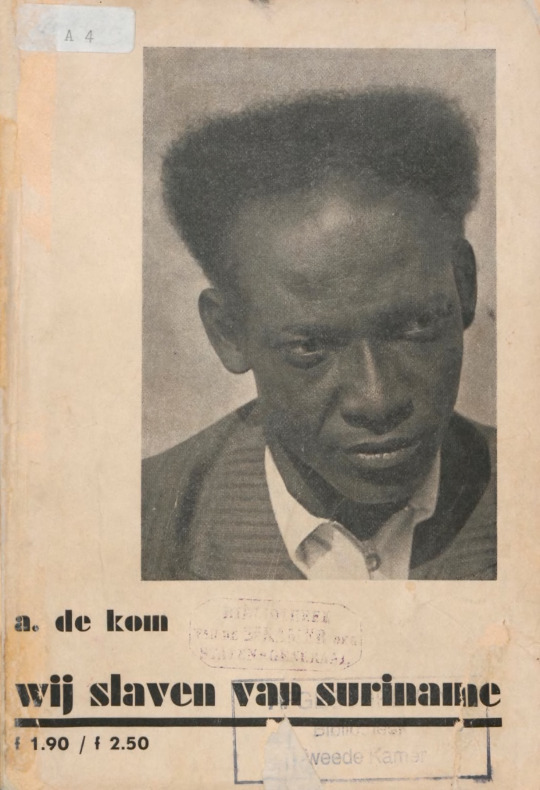
Anton de Kom, Wij slaven van Suriname, Contact, Amsterdam, 1934 [Cover photograph by Piet Zwart]
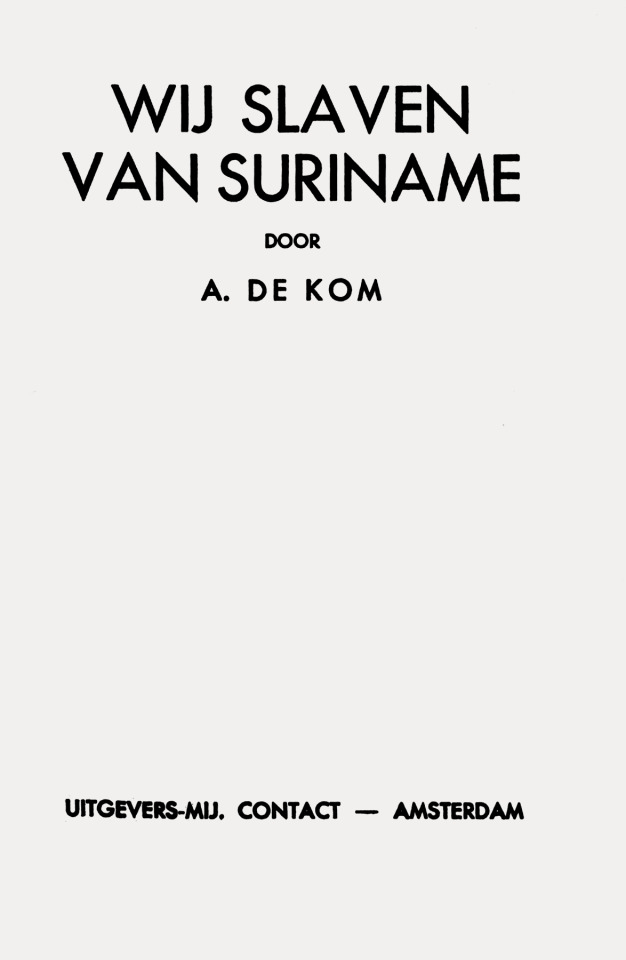

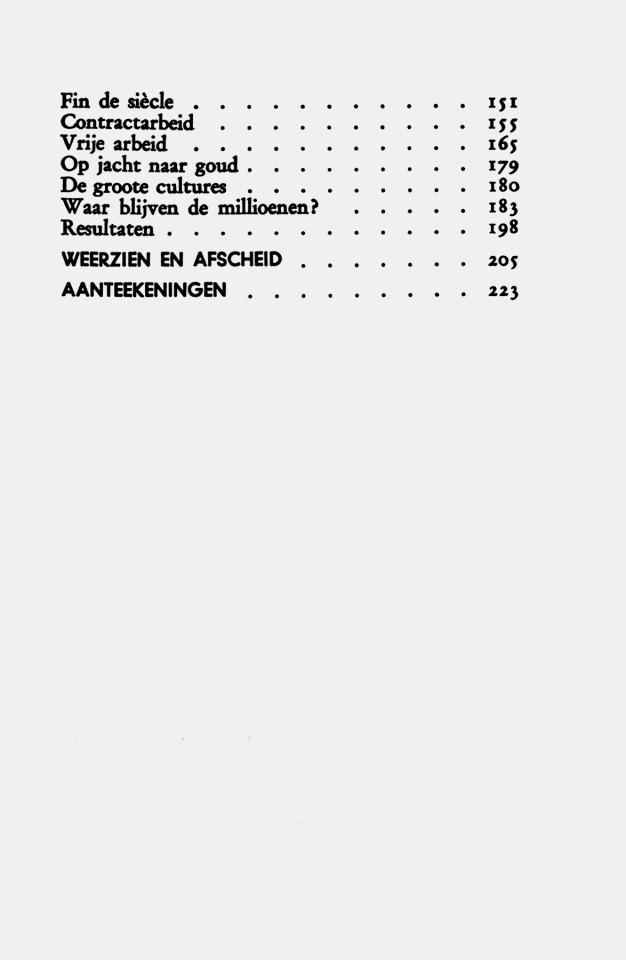
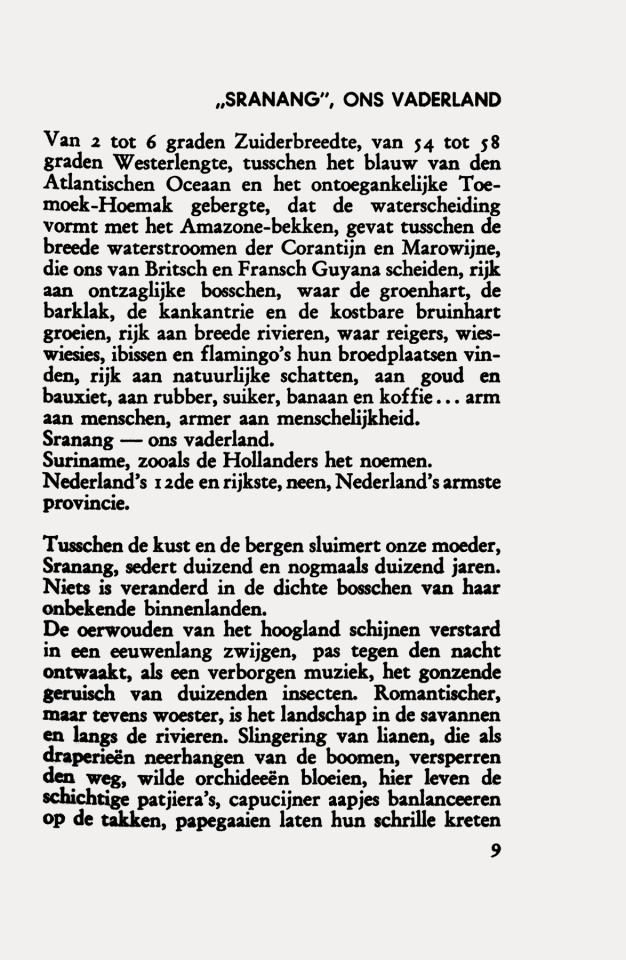
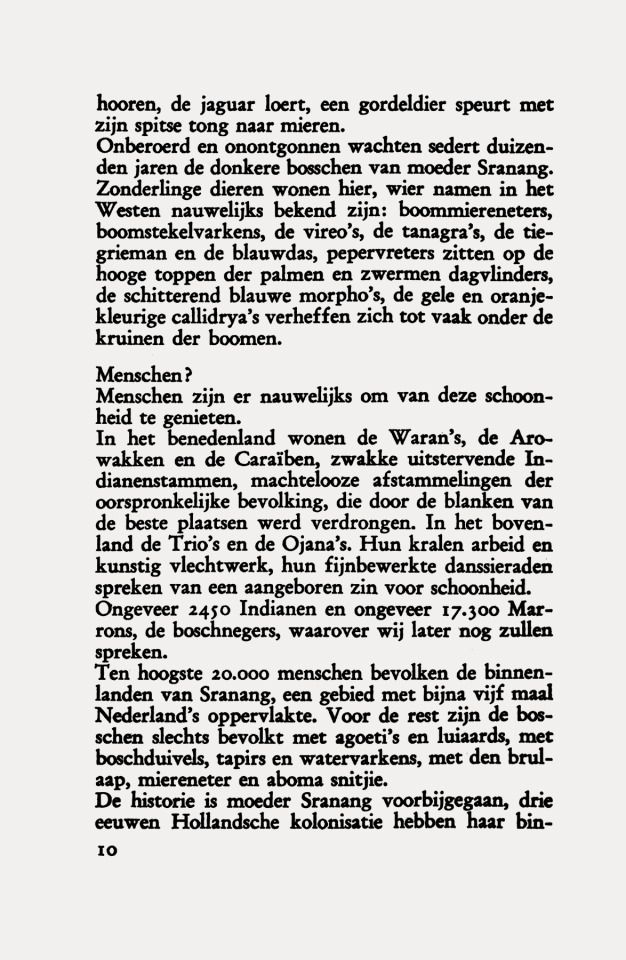
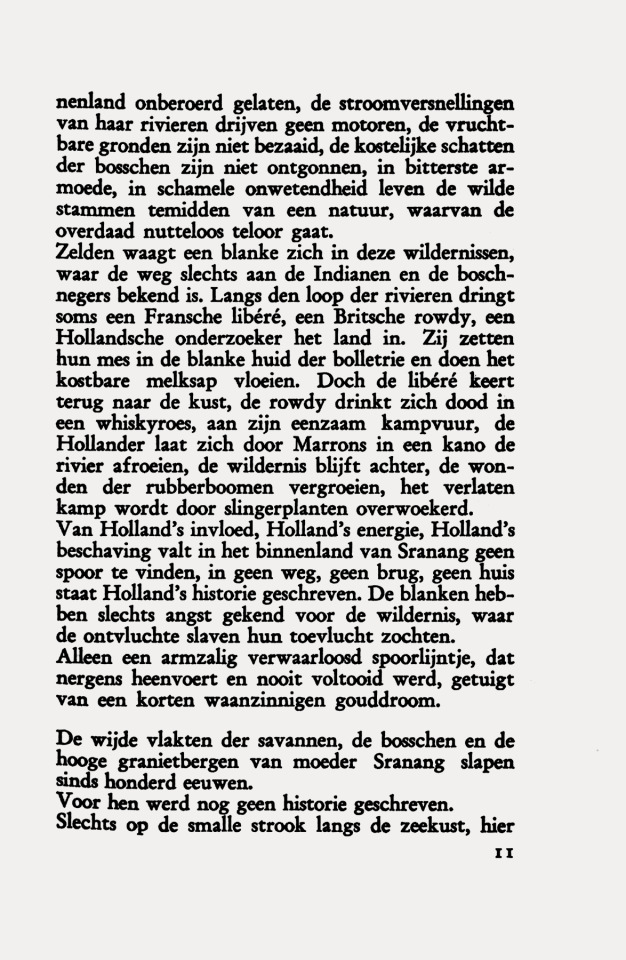
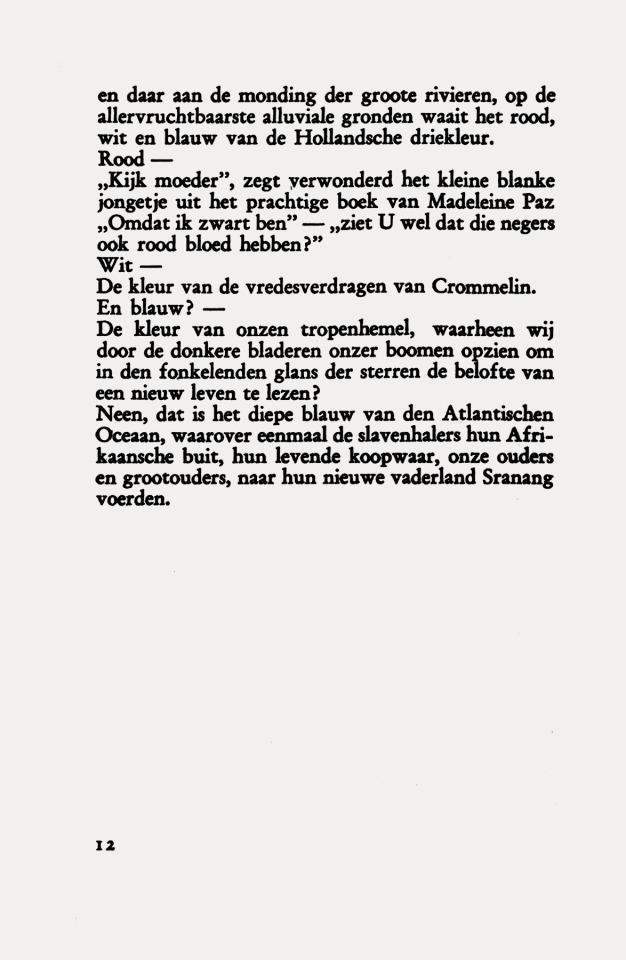

13 notes
·
View notes
Text
De Efteling viert jubileum van 70 jarig bestaan met Droomvlucht

Het was vier maanden lang afzien voor de echte Efteling-liefhebbers, maar nu de Droomvlucht weer open is blijkt dat het personeel van het pretpark in die tijd niet bepaald heeft stilgezeten. Zo lijken alle kleuren anders door nieuwe verlichting, al kwam er bij de elfjes wel degelijk verf aan te pas.
Het regent weer in het Trollenbos, in het Kastelenrijk is te zien hoe het nacht en ook weer dag wordt en Koning Oberon heeft weer één in plaats van twee schoenen aan zijn voeten. Dat zijn slechts enkele van de zichtbare veranderingen die op te merken zijn nu de Droomvlucht na vier maanden onderhoud weer is opengesteld voor het publiek. Tijdens de renovatie van in totaal 6 miljoen euro werden ook 260 stalen tussenstukken handmatig vervangen. Tevens kregen in totaal elf elfjes in de attractie een andere dan witte huidskleur en een andere haardracht.
Met je Museumkaart naar de Efteling. Het kan in het Noordbrabants Museum in Den Bosch. Het museum heeft het 70-jarig bestaan van het pretpark aangegrepen om een tentoonstelling te maken over het sprookjesbos, dat uitgroeide tot een magisch attractiepark van internationale allure. Alle iconen zijn present: van Langnek en Pardoes tot Holle Bolle Gijs.
Op het voorplein van het museum prijkt al enige weken een van de bekende muzikale paddenstoelen. Een passerende kleuter legt glunderend haar oor te luister op de rode hoed met witte stippen. Precies zoals generaties kinderen voor haar al gedaan hebben in de Efteling. Binnen legt conservator Joris Westerink de laatste hand van de expositie die zaterdag voor het publiek opent. „Ik mocht in alle schatkamers van de Efteling rondneuzen”, vertelt hij. „Dat was best spannend, want sommige van die depots liggen onder een achtbaan. Dan stond ik te zoeken tussen een aantal oude kostuums, terwijl boven mijn hoofd de bezoekers in de over de rails ratelende karretjes het uitgilden van angst en plezier.”
Al meer dan tien jaar waren er plannen om eens flink uit te pakken met een grote Efteling-tentoonstelling „Wij wilden een kijkje achter de schermen bieden. En nu het pretpark een kroonjaar viert, is het eindelijk zover. Al zijn we door de coronapandemie eigenlijk een jaar te laat. Want het sprookjesbos opende in mei 1952 zijn deuren. Toen nog met slechts tien eenvoudige sprookjes, zoals Vrouw Holle, Doornroosje en niet te vergeten Sneeuwwitje.”
Wachtrijen
’Spiegeltje, spiegeltje aan de wand, wie is de mooiste van het hele land?, klinkt de stem van Wieteke van Dort door de museumzaal. „Zij vertolkte de stem van de eerste toverspiegel uit de jaren zestig”, weet Westerink. Zelf was hij voorheen allesbehalve een Efteling-fan, bekent hij. „Ik ben een vrij sikkeneurig type en kom van boven de rivieren. De Efteling is toch ook typisch Brabants. Ik associeerde het vooral met lange wachtrijen voor de achtbaan. Maar inmiddels heeft het park ook mijn hart gestolen.”
Uit de magazijnen in Kaatsheuvel diepte hij onder meer tal van originele tekeningen van Anton Pieck op. „Sommige zijn prachtig uitgewerkt, andere zijn voorzien van details, waarin ook aangegeven staat hoe het mechaniek in een attractie werkt, zoals hoe de nek van Langnek vernuftig in de grond moest worden weggewerkt.” Pieck was samen met uitvinder en cineast Peter Reijnders de grondlegger van het sprookjesbos. „De brief waarin Pieck de opdracht krijgt om tien sprookjes te ontwerpen uit februari 1952 ligt hier ook in de vitrine. De illustrator die naam gemaakt had met zijn tekeningen voor de Sprookjes van Grimm kreeg 3000 gulden voor de opdracht, te betalen in termijnen van 500 gulden”, wijst Westerink. „De mannen hebben keihard gewerkt, binnen drie maanden opende het bos al.”
Arme streek

Het idee voor een natuurpark in Kaatsheuvel voor de lokale bevolking en de toeristen om in te ontspannen dateerde echter al van eerdere datum. „Daarvoor moeten we terug naar de jaren dertig van de vorige eeuw, toen een pastoor en een kapelaan samen met de voorzitter van de lokale voetbalvereniging hier een Katholiek Sport- en Wandelpark oprichtten. Later in 1948 deed de burgemeester van Loon op Zand daar nog een schepje bovenop. De streek rondom Kaatsheuvel was destijds vrij arm. Hij wilde het toerisme in zijn gemeente bevorderen, want behalve de schoenenindustrie was er niet veel te doen. Zo ontstond in 1950 Natuurpark De Efteling.” Met zevenmijlslaarzen loopt Westerink door de historie. „Eind jaren vijftig kwamen er al meer dan 700.000 bezoekers per jaar naar het Sprookjesbos. Afval was destijds al een probleem. Vooral rond het huisje waar snoep verkocht werd.
Pieck kwam samen met techneut Henk Knuiver met een geniale oplossing. Zij bedachten niet alleen prullenbakken die dankjewel zeiden, maar introduceerden ook de inmiddels 64-jarige Holle Bolle Gijs. Een meesterzet, want geen kind gooide meer een snoeppapiertje op de grond, alles verdween in de mond van deze veelvraat. Het was er nog nooit zo schoon.” Ook alle moderne attracties waarmee de Efteling uitgroeide tot een pretpark voor alle generaties komen aan bod. Van de Fata Morgana en de Python tot Droomvlucht en de Baron. Zelfs het onlangs gesloten en ontmantelde Spookslot is niet vergeten. De betoverde viool die de danse macabre leidde van de skeletten die uit hun graven klommen is een van de stille getuigen van dit ooit zo baanbrekende spookhuis. Westerink knikt: „Nostalgie gegarandeerd.”
(Door Dick van As)
0 notes
Text
D. 19 december
Dagens låge: et lille “(h)jule-eventyr” 😉
Først vil vi undskylde den manglende låge i går. Men de sidste dage har udspillet sig et lille (h)jule drama✨
Det hele startede i Kroatien. Med et par mindre punkteringer på Antons forhjul…
Men så efter flere lapninger og diverse gaffatape indeni og udenpå SPRANG dækket sgu…. Og Anton blev døv i et par sekunder…
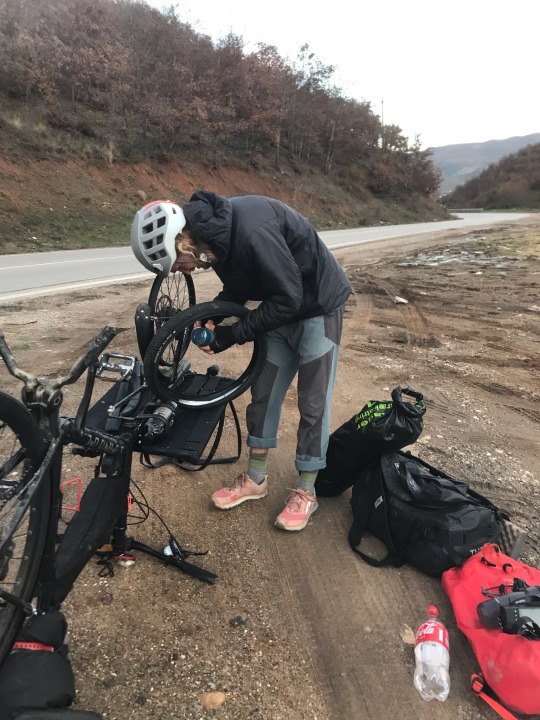
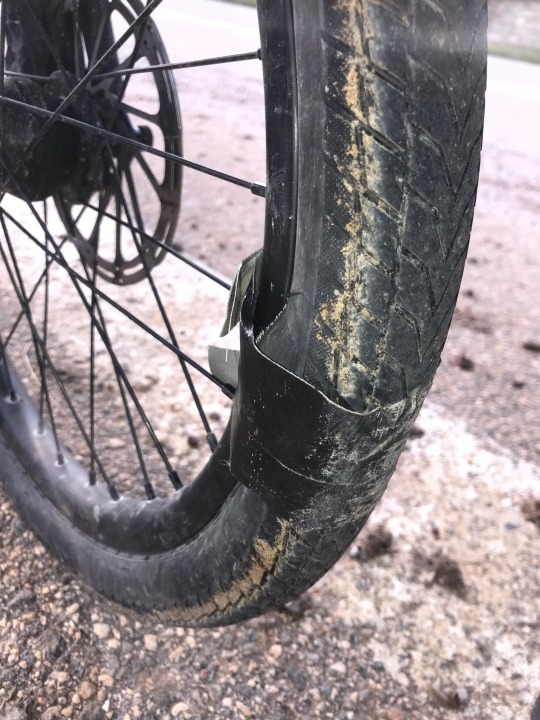
Oh well… hvad gør man så in the middle of nowhere i Albanien uden offentlig trafik….?
mere gaffatape, pumpe hver halve time og konstant angst over hvornår dækket står af… sådan kørte Anton 80 km gennem det østlige Albanien, over grænsen til Grækenland indtil vi sent i går aftes på mirakuløs vis kom frem til det dejligste græske par fra Warmshowers, Eva & Niko, der nu har hjulpet os med at skaffe et nyt dæk i Kostaria !! 🙏🥰
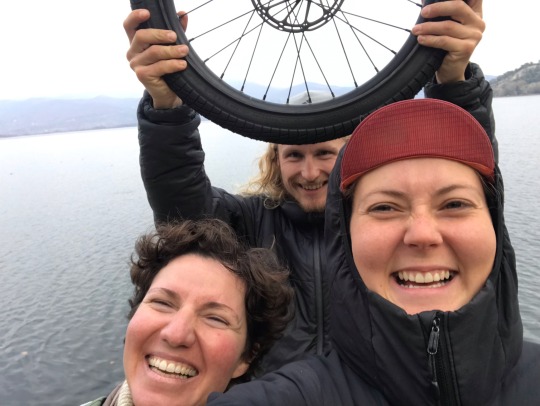

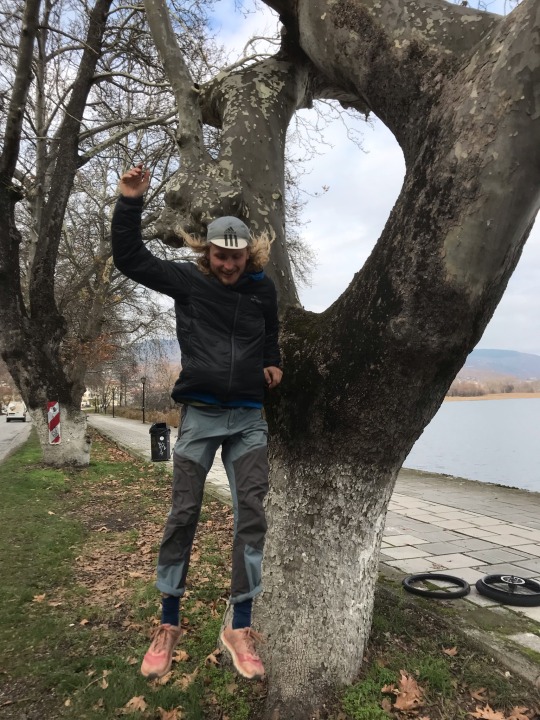
Og i morgen har vi forhåbentlig snuden i sporet og hjul på vejen igen ✨👏
0 notes
Text
Technisch personeel AdeKUS schort actie op
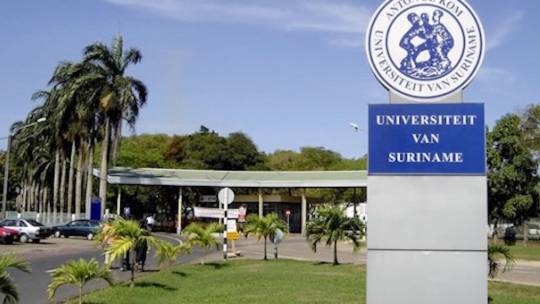
Het technisch personeel van de Anton de Kom Universiteit heeft hun actie opgeschort. “We zijn nu in onderhandeling met het bestuur, maar intussen wordt de actie opgeschort”, zegt een bestuurslid van de Werknemers Federatie van de Universiteit (WFU).
Het technisch personeel van het instituut ging op 23 april in actie, omdat er een conflict ontstond tussen het bestuur. Er was een dispuut over bepaalde zaken die opgenomen zijn in de arbeidsovereenkomst van 2023. “We zijn nu aan het onderhandelen.” Het bestuurslid zegt dat er nu onderhandeld wordt over een lumpsum, die uitbetaald moet worden. “We hopen dat er snel overeenstemming kan worden bereikt. De onderhandeling van de arbeidsovereenkomst van 2024 is nog niet begonnen. We beginnen daar binnenkort wel mee.”
Het bestuur van het instituut wilde eerder het technisch personeel bij de afkoop van de arbeidsovereenkomst slechts bruto SRD 8000 per lid uitkeren, terwijl het wetenschappelijk personeel bij de afkoop van de arbeidsovereenkomst per lid SRD 67.500 heeft gekregen. Het wetenschappelijk personeel was het niet eens met dit bedrag en wilde een onderbouwing van de SRD 8000. Er zal nu een lumpsum aan het technisch personeel uitgekeerd worden, daar wordt nu over onderhandeld.
Read the full article
0 notes
Text
Umlandi
South African music keeps being part of the global music conversation and the artists are doing their best at exporting it across all frontiers.
South African popular music might be having the best years it has had in recent history. Carrying on from the momentum gained during the pandemic and its lockdown/travel restrictions, 2022 has been one of the years artists get to eat the fruits of their hard labour.
Contemporary artists are touring, performing at the biggest global stages amongst the best the world has to offer. From the Grammys and Coachella to Ibiza and Afronation, everyone is outside and is putting out their best music while at it. South African music is part of the global African music conversation and the artists are doing their best to export the music.
South Africa is known for its music that has played a huge role towards the country's society. The music of South Africa is very diverse with a wide variety of genres such as Marabi, Kwaito, House music, Isicathamiya, Gqom and Amapiano etc.
With countless hits, such as Nkosi Sikelel' iAfrika, Pata Pata, Umqombothi (song), Vulindlela and legendary singers such as Miriam Makeba, Brenda Fassie, Hugh Masekela, Yvonne Chaka Chaka and Lucky Dube, South African music has played a huge impact in Africa(especially in Southern Africa, to a point where countries such as Namibia and Botswana have their own versions of South African music genres such as Kwaito etc.
Afrikaans music was primarily influenced by Dutch folk styles, along with French and German influences, in the early twentieth century. Zydeco-type string bands led by a concertina were popular, as were elements of American country music, especially Jim Reeves. The most prolific composers of "tiekie draai" Afrikaans music were lyricist Anton De Waal who wrote many hit songs with songwriters, pianist Charles Segal ("Hey Babariebab Se Ding Is Vim", "Kalkoenjie", "Sy Kom Van Kommetjie" and many others) and accordionist, Nico Carstens. Bushveld music based on the Zulu were reinterpreted by such singers as Marais and Miranda. Melodramatic and sentimental songs called trane trekkers (tearjerkers) were especially common. In 1973, a country music song won the coveted SARI Award (South African Music Industry) for the Song of the Year – "My Children, My Wife" was written by renowned South African composer Charles Segal and lyricist Arthur Roos. In 1979 the South African Music scene changed from the Tranetrekkers to more lively sounds and the introduction of new names in the market with the likes of Anton Goosen, David Kramer (singer), Koos du Plessis, Fanie de Jager, Flaming Victory and Laurika Rauch. Afrikaans music is currently one of the most popular and best selling industries on the South African music scene.
After World War I, Afrikaner nationalism spread and such musicians as Jewish pianist and composer Charles Segal and accordionist Nico Carstens were popular.
CONTRACT US
Phone:
+2349120010105
Website:
https://umlandi.com/
Social Link:
https://twitter.com/naijasong
1 note
·
View note